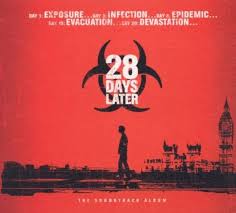28 Days Later: The Film That Redefined Zombie Horror

Introduction
’28 Days Later’, directed by Danny Boyle and released in 2002, is a British post-apocalyptic horror film that has had a profound impact on the zombie genre and cinema as a whole. The film explores the collapse of society following the outbreak of a deadly viral infection that turns people into rage-driven zombies. Its relevance is not just rooted in its thrilling narrative and memorable cinematography, but also in its commentary on societal issues, public health, and the fragility of civilization.
Plot Overview
The story begins with an animal rights group breaking into a laboratory, inadvertently releasing a virus known as Rage. After a mere 28 days, London is effectively deserted, as survivors grapple with the terrifying impact of the infection. The film follows Jim, played by Cillian Murphy, who awakens from a coma to find a hauntingly deserted city. As he encounters other survivors, including Selena and Mark, the trio faces not only the infected but also the breakdown of societal structures.
Cinematographic Innovations
One of the most striking aspects of ’28 Days Later’ is its visual style. Shot on digital video, Boyle’s choice contributed to a gritty realism that heightened the film’s sense of urgency and danger. The cinematography, coupled with an impactful score by John Murphy, created an atmosphere that resonated deeply with audiences, helping to differentiate it from previous zombie films that relied heavily on practical effects and makeup.
Impact on the Genre and Public Perception
’28 Days Later’ not only revitalised the zombie genre but also influenced a wave of post-apocalyptic films and television series that followed. The film’s unique approach to horror, blending social commentary and character-driven narratives, set the stage for works like ‘The Walking Dead’ and ‘World War Z’. Additionally, its portrayal of societal collapse drew parallels to real-world issues, heightening its relevance in discussions around infectious diseases and public health.
Conclusion
More than two decades after its release, ’28 Days Later’ remains a seminal work in horror and science fiction. Its innovative techniques, compelling narrative, and sociocultural commentary are significant as they encourage us to ponder the nature of humanity in times of crisis. As audiences continue to engage with the film, whether through retrospectives or new adaptations, its legacy as a game-changer in the zombie film genre endures, inspiring future filmmakers to explore the boundaries of horror, society, and resilience.









